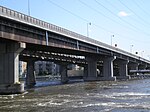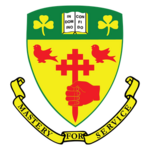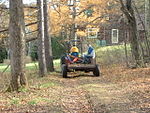Sainte-Anne-de-Bellevue

Sainte-Anne-de-Bellevue (French pronunciation: [sɛ̃t an də bɛlvy]) is an on-island suburb located at the western tip of the Island of Montreal in southwestern Quebec, Canada. It is the second oldest community in Montreal's West Island, having been founded as a parish in 1703. The oldest, Dorval, was founded in 1667. Points of interest include the Sainte-Anne-de-Bellevue Canal (a National Historic Site of Canada), the Sainte-Anne Veterans' Hospital, the Morgan Arboretum, and the L'Anse-à-l'Orme Nature Park. Sainte-Anne-de-Bellevue is also home to John Abbott College and McGill University's Macdonald Campus, which includes the J. S. Marshall Radar Observatory and the Canadian Aviation Heritage Centre as well as about 2 square kilometres (0.77 sq mi) of farmland which separates the small town from neighbouring Baie-d'Urfé.
Excerpt from the Wikipedia article Sainte-Anne-de-Bellevue (License: CC BY-SA 3.0, Authors, Images).Sainte-Anne-de-Bellevue
Rue Sainte-Anne,
Geographical coordinates (GPS) Address Nearby Places Show on map
Geographical coordinates (GPS)
| Latitude | Longitude |
|---|---|
| N 45.403888888889 ° | E -73.9525 ° |
Address
Rue Sainte-Anne 111
H9X 1M1
Quebec, Canada
Open on Google Maps








